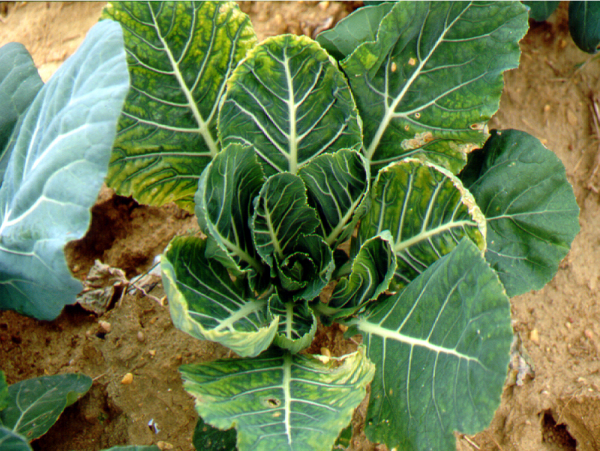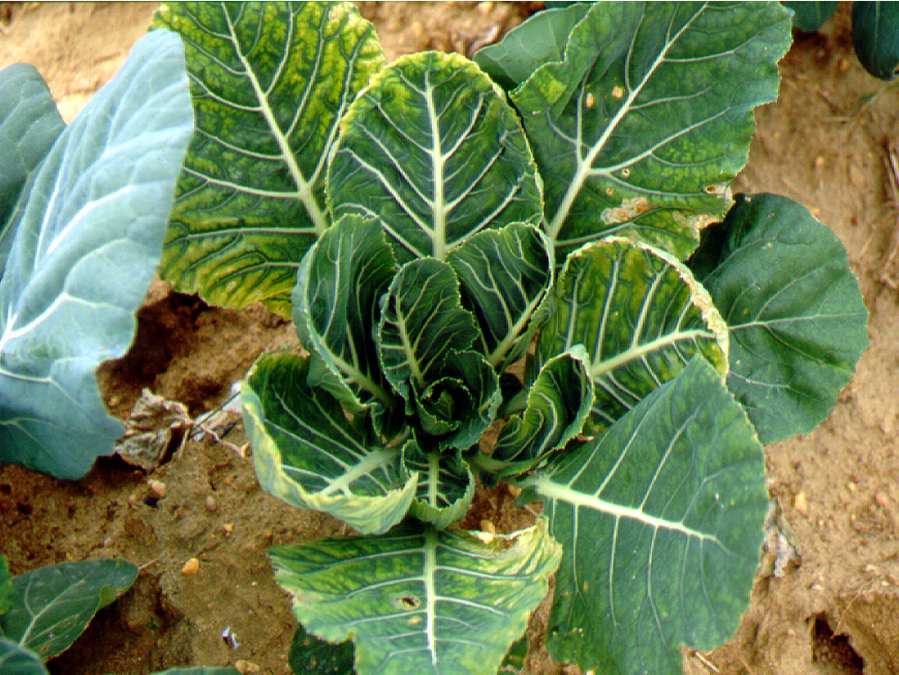Crop Production

Many home and commercial vegetable growers have their own secret recipe that helps produce the biggest and best tasting vegetables. Often times, forms of magnesium (Mg) are a part of that recipe. Magnesium is an essential element required by all plants. It is also the nutrient that is most likely to be deficient in vegetable soils.
Crops
Vegetable crops vary in their sensitivity to magnesium deficiencies in the soil. Beans, English peas, beets, radish, lettuce, Swiss chard, and sweet potatoes tend to be tolerant of soils that are low in magnesium. They seemingly use the available magnesium more efficiently that other crops. Deficiency symptoms in these crops tend to not develop until the levels of magnesium are critically low.
Crops in the Solanaceous (tomatoes, peppers, eggplants, etc.) and Cucurbit (watermelons, cucumbers, squash, etc.) families develop deficiency issues rather quickly when levels are limiting. Many Brassica crops have this problem as well, especially greens, broccoli, and cabbage.
Diagnose
Growers should be proactive and prevent a magnesium deficiency before it causes a problem. The best way for a grower to determine if they to apply magnesium is by performing a soil test. A soil test will determine which nutrients the soil is lacking and the Auburn University soil test lab will provide recommendations of which, if any, nutrients need to be added.
Symptoms

Figure 1. Magnesium deficiency in collard greens.
Magnesium is a mobile element meaning that it can travel though the plant from old growth towards new, developing growth. As a result, deficiency symptoms will appear on the older growth first. If symptoms are not corrected, these symptoms can progress to younger growth. Figure 1 represents typical magnesium deficiency symptom on collards. Note the yellowing between the veins of the lower leaves and the upward cupping of affected leaf margins.
Sources
There are several common sources of magnesium available for growing vegetables. Epsom salts (magnesium sulfate) is one of the most common sources and is found in many growers management plans. The Epsom salt typically used in vegetable production is the heptahydrate sulfate mineral epsomite.
Some other common sources of magnesium include
- brucite (39%Mg)
- sulfate of potash-magnesia (11.1% Mg)
- kieserite (18.1% Mg)
- magnesium chelates (2 to 4%Mg).
Application
Magnesium is often applied from dolomitic limestone (11% Mg) or high-magnesium limestones, especially if a pH adjustment is required. If no liming agent is required, magnesium should be applied as a fertilizer source on low-magnesium soils.
If a vegetable crop develops a deficiency, it is recommended to apply 2 to 4 pounds of actual magnesium per acre via a drip irrigation system using a water-soluble form, such as Epsom salt. To determine how much Epson salt to inject, growers should multiply the recommended level of magnesium per acre they want to apply by 10.136.
For example, if a grower wants to apply 4 pounds per acre of magnesium from Epsom salt, they would multiple 4 x 10.136 and get 40.54 pounds of Epsom salts. Do not apply all of this at once, but inject it over three or four irrigation events.
If a grower needs to sidedress, apply 25 to 30 pounds per acre of actual magnesium.
In an emergency, magnesium may be applied as a foliar spray. However, growers should not expect great results. Magnesium does not penetrate leaves well. A rate of 2 tablespoons of Epsom salts per gallon of water is generally recommended. Growers need to apply this multiple times to have an impact. Do not add any dish detergents or other soaps to the Epsom salts, as this will likely result in crop damage.
While magnesium is an important factor to vegetable growth, making applications above what the soil test indicates will not further improve vegetable growth. Applications only help when there are insufficient levels in the soil. Applying more that recommended levels is a waste of resources.

